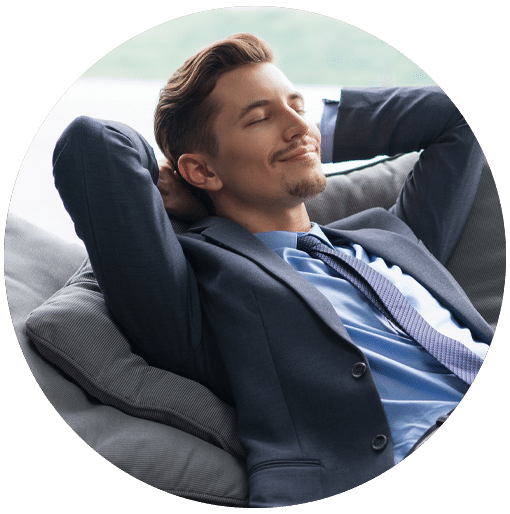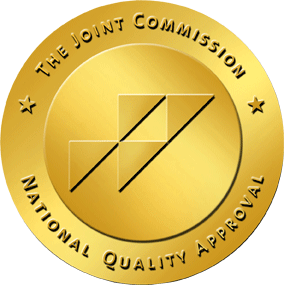Muscle Relaxer Addiction
Muscle relaxer addiction requires the skill and expertise of professional substance abuse disorder counselors to address. If you’ve become dependent on muscle relaxers, the team at Vogue Recovery Center is ready to help.
Muscle relaxers are a type of prescription drug used in medical settings and prescribed by doctors to calm or relax the central nervous system (CNS). The first drugs were developed in the 1940s. Since then, they have grown in popularity and prevalence and, unfortunately, become a problem for many people.

What Are Muscle Relaxers?
Muscle relaxers, also called muscle relaxants, are prescription drugs only available from licensed physicians. They help prevent muscle spasms, pain, and discomfort by producing a relaxing effect that releases tension and helps calm the CNS, promoting healing. They depress the CNS, limiting the transmission of pain signals between the spinal cord and the brain. This dampens the response from muscles, which reduces spasms and eases tightness. Muscle relaxants are often used to help treat low back pain or following surgery.
Some of the most popular muscle relaxers include:
- Soma (Carisoprodol)
- Flexeril (Cyclobenzaprine)
- Robaxin (Methocarbamol)
- Lioresal (Baclofen)
- Zanaflex (Tizanidine)
- BOTOX Cosmetic (Botulinum toxin)
Muscle relaxers come in different forms, including pill, injection, and oral solutions. If you are eligible for muscle relaxants, your doctor will decide which specific medication, its form, and dosage are right for your unique situation.
What Are the Different Types of Muscle Relaxers?
There are two types of muscle relaxers prescribed by doctors:
1. Antispastic Muscle Relaxers
Also called antispasmodic drugs, this medication is the most common muscle relaxer prescribed. It reduces muscle spasms and relieves pain by blocking nerve pathways in the nervous system that cause muscles to contract. This can reduce pain and improve function in people who suffer from muscle spasticity.
2. Antispasmodic Muscle Relaxers
This medication is often used as part of a treatment plan that involves rest and therapy to treat muscle spasms. It is not intended for long-term use, and it carries side effects such as:
- Drowsiness
- Nausea
- Headaches
- Dizziness
What Happens When You Take Muscle Relaxers?
The most common side effect of muscle relaxers is relaxation. These medications prevent your nerves from sending signals to your brain that your body is in pain or discomfort. This can lead to feelings of drowsiness and fatigue. It’s not safe to drive a vehicle or operate any kind of machinery while under the influence of muscle relaxants.
Muscle relaxers can increase in intensity when combined with other substances such as alcohol. If you mix alcohol and muscle relaxers, the side effects include:
- Extreme fatigue
- Blurry vision
- Confusion
- Dizziness
- Organ damage
- An increased risk of overdose
Muscle relaxers can also interfere with other prescription drugs. It’s important to speak with your doctor about your medical history or any other medications you are taking prior to starting a course of muscle relaxants.
Are Muscle Relaxers Addictive?
It is important to take muscle relaxers only as prescribed because they do carry a potential for addiction and abuse when misused or taken over a long period of time. Their relaxation and sedative effects give them a high potential for habitual use. Those who take central nervous system depressants can also build a tolerance to the drugs. This means they need a higher dose to feel the same effects, and it opens the door to overdosing on muscle relaxers or to using other substances like alcohol at the same time to get heightened effects.
If you stop taking muscle relaxers, you may experience withdrawal symptoms. The most common muscle relaxer withdrawal symptoms include:
- Anxiety
- Insomnia
- Restlessness
- Pain
- Discomfort
- Agitation
- Headaches
- Muscle spasms or tremors
What Are the Signs of a Muscle Relaxant Overdose?
Muscle relaxers can be dangerous and carry a potential for overdose. Because people who take the drug build a tolerance over time, it opens the door for overdosing by accident. This is especially true for those who take muscle relaxants for recreational purposes or mix the drug with other substances like alcohol.
If you suspect someone you love is overdosing on muscle relaxants, here are some signs to look for:
- Fading in and out of consciousness
- Seizures
- Difficulty breathing
- Hallucinations
- Disassociation
- Confusion
Central nervous system depressants carry a potential for overdose and death just like other prescription medications. If you’ve been using muscle relaxers for a long time, you may need a detox center to help with the withdrawal process.
Muscle Relaxer Addiction Treatment
Treating muscle relaxer addiction starts with contacting the team of clinical professionals at Vogue Recovery Center. We are a full-service addiction and mental health treatment center that can provide the proper healing program for your needs. Our approach to muscle relaxer treatment is integrated and comprehensive. We provide behavioral, evidence-based programs at our rehab facilities that can help you live life free from drug abuse.
Our unique levels of care for muscle relaxer addiction treatment can help you find a path to recovery that offers a real shot at sobriety. Our levels of care include:
Medical detox: Drug detox is a crucial first step in the process of recovery. Detox is when you rid your body of all substances so you can begin healing. Withdrawal and detox can be dangerous, so it’s helpful to have professional substance abuse treatment counselors overseeing the process. They ensure comfort and safety while you detox from drugs and alcohol.
Inpatient treatment: Residential treatment is a form of recovery that involves living full-time at a drug rehab center. You undergo treatment programs every day to overcome an addiction to prescription muscle relaxants. Therapies in inpatient addiction treatment include group and individual therapy, family therapy, cognitive behavioral therapy (CBT), and more.
Partial hospitalization program (PHP): A PHP is a form of outpatient care that involves spending up to five days per week at a treatment center. While in treatment you can live at home or in a sober living center. The goal of a PHP is to begin the transition back to normal life.
Intensive outpatient program (IOP): An IOP is a less intense outpatient program than a PHP that allows more flexibility in recovery. You attend treatment for between 9 and 15 hours per week while living at home and going to school or work. It’s another step towards returning to normal life.
Outpatient program: Outpatient programs are designed to ease the transition back to normal life. The goal is to build on the skills and coping mechanisms you learned in recovery to avoid muscle relaxer abuse in the future.
If you’re ready to end an addiction to muscle relaxers, contact the team at Vogue Recovery Center today. Our substance abuse treatment programs can help prevent something terrible like a muscle relaxant overdose. Our admissions team is ready to verify your insurance and get you started with a treatment program that can help you overcome muscle relaxer addiction. Don’t let physical dependence on muscle relaxers control your life any longer.

Medically Reviewed by Jessica Elbe, LCSW


